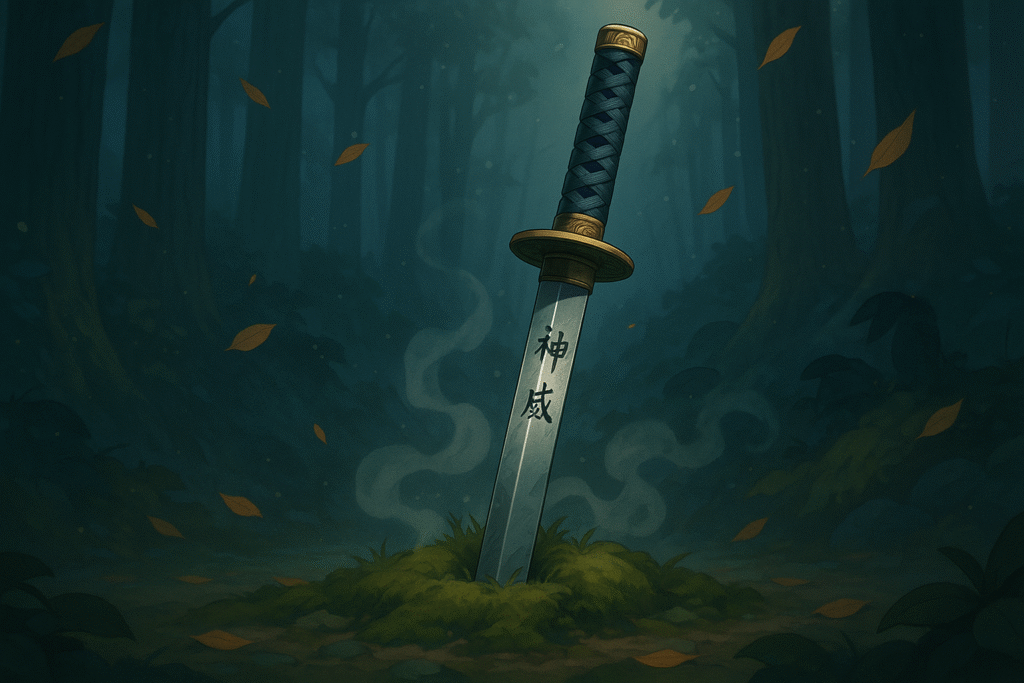The Japanese mola mola, also known as the ocean sunfish (マンボウ, manbō), is one of the most peculiar and awe-inspiring creatures found in Japan’s coastal waters. Known for its gigantic, disk-like body, peculiar movements, and docile nature, this deep-sea oddity has intrigued marine biologists, divers, and even historians for centuries.
Once rumored to have played a role in the Shogunate’s taxation system, today, the mola mola is a beloved sight among divers exploring Japan’s vibrant marine ecosystem. These gentle giants are found seasonally in various regions across the Japanese archipelago, making them a sought-after spectacle for underwater adventurers.
In this guide, we’ll explore the best places in Japan to see the mola mola, when they appear, and fascinating facts about this unique ocean dweller.
What is the Japanese Mola Mola?
The mola mola (マンボウ, manbō) is the largest bony fish in the world, capable of growing up to 3 meters (10 feet) in length and weighing over 2,000 kg (4,400 lbs). Unlike most fish, it lacks a traditional tail, replacing it with a unique structure called a clavus, giving it a disk-shaped body.
Key Features of the Mola Mola:
✔️ Flattened, rounded body with large dorsal and anal fins
✔️ Sluggish swimming style, often seen drifting near the surface
✔️ Feeds mainly on jellyfish, crustaceans, and small fish
✔️ Covered in parasites, leading them to seek out cleaner fish and even birds for relief
✔️ Can jump out of the water, despite their bulky appearance
These traits make the Japanese mola mola a true wonder of the deep.
Where to See Japanese Mola Mola in Japan?
Mola molas can be found across Japan, but specific regions and seasonal diving spots offer the best chance of encountering them in the wild.
1️⃣ Kantō Region (Tokyo & Chiba Prefecture)
📍 Best Spot: Ito-Tateyama (Chiba Prefecture)
🗓️ Season: Winter & early spring
The Ito-Tateyama area in Chiba Prefecture offers seasonal diving tours where mola molas are often spotted. The Nanpō Archipelago, including the Izu and Ogasawara Islands, also provides opportunities to encounter these fish, though sightings can be less predictable.
2️⃣ Chūbu Region (Shizuoka Prefecture & Izu Peninsula)
📍 Best Spots:
- Mikomoto Island
- Nakagi
- Osezaki (cleaning station)
- Futo Dive Sites
🗓️ Season: April – August
The Izu Peninsula in Shizuoka Prefecture is one of Japan’s prime spots for mola mola sightings. Divers frequent deeper waters around Mikomoto Island and Nakagi, while Osezaki is believed to act as a cleaning station, attracting mola molas seeking relief from parasites.
🌊 Special Tip: Visit Numazu and Ita dive sites on the western side of Izu in early spring for increased chances of encounters.
3️⃣ Shikoku Region (Kōchi Prefecture)
📍 Best Spots:
- Uguru Island
- Okitsu & Muroto (Pacific Coast sites)
🗓️ Season: Variable, with increased sightings during warmer months
The coast of Shikoku, particularly in Kōchi Prefecture, is another location where mola molas are seen, though less frequently than in the Izu Peninsula. Uguru Island and deep-water sites like Okitsu and Muroto are known for sporadic appearances.
4️⃣ Kyūshū Region (Kagoshima & Miyazaki Prefecture)
📍 Best Spots:
- Yamakawaoki Kamise (Kagoshima)
- Nichinan & Nobeoka (Miyazaki)
- Tokara Islands (Satsunan Archipelago)
🗓️ Season: Late winter to early spring
Kyūshū’s southern waters are another hotspot for mola mola sightings. The Satsunan Islands, particularly the Tokara Islands, host seasonal sightings of these massive creatures. In addition, Yamakawaoki Kamise and Nobeoka offer excellent diving conditions to encounter mola molas in early spring.
The Mysterious Life of the Mola Mola: Fun Facts
🐟 The largest bony fish – They hold the record as the heaviest bony fish in the ocean.
🐟 Lays the most eggs – A female mola mola can lay up to 300 million eggs at once—the highest of any vertebrate.
🐟 Ocean drifters – Despite their size, mola molas are weak swimmers, often drifting with ocean currents.
🐟 Sunbathers of the sea – Mola molas are often seen floating at the surface, believed to be warming up after deep dives.
🐟 Parasite magnets – Over 40 types of parasites attach to their skin, causing them to seek help from cleaner fish, seabirds, and even jumping out of the water.
How to Dive with Japanese Mola Mola in Japan?
If you’re eager to witness the Japanese mola mola in its natural habitat, follow these essential tips:
📌 Best Season to See Mola Mola in Japan
- Spring & Summer (April – August): Best for Izu Peninsula, Mikomoto Island, and Numazu
- Winter & Early Spring (December – March): Best for Kyūshū, Tokara Islands, and Ito-Tateyama
📌 Ideal Diving Conditions
- Deep-sea locations (30-50 meters) provide better chances of mola mola encounters.
- Morning dives tend to have calmer waters, improving visibility.
- Cleaning stations (like Osezaki) increase the likelihood of sightings.
📌 Recommended Diving Tours
- Shizuoka Mola Mola Dive Tour (Izu Peninsula)
- Kyūshū Sunfish Expedition (Tokara Islands)
- Chiba Seasonal Dive for Mola Mola
Check with local dive shops in Shizuoka, Kagoshima, and Chiba for scheduled mola mola dive tours.
Mola Mola in Japanese Culture & Folklore
In Japan, the mola mola (マンボウ, manbō) has long been a creature of fascination:
🗿 Historical Taxation?
- Some historians suggest mola molas were once used as tax payments in the Shogunate era due to their large size and rarity.
🎨 A Symbol of Clumsiness
- The Japanese view mola molas as slow, awkward, yet lovable creatures, often featured in manga, anime, and social media as a symbol of laziness and innocence.
🍽 A Delicacy in Some Regions
- In select parts of Japan, mola mola meat is consumed, particularly in Shizuoka and Miyazaki, where it is prepared as a delicacy.
Conclusion: Witness the Japanese Mola Mola Up Close!
The Japanese mola mola remains one of the most intriguing marine species in Japan’s oceans. Whether you’re an experienced diver or simply fascinated by marine life, spotting one of these gentle ocean giants is an unforgettable experience.
From the deep waters of Izu Peninsula to the remote Tokara Islands, Japan offers some of the best locations in the world to observe mola molas in their natural habitat. So, if you’re planning a diving adventure in Japan, be sure to add a mola mola encounter to your bucket list!
🌊 Have you ever seen a Japanese mola mola in the wild? Share your experience in the comments! 🐠✨
Discover More About Japan & Japanese Culture 🇯🇵✨
Looking for more insights into Japanese life, language, and travel? Check out these must-read articles from Wakoku:
📖 Japanese Language & Learning Resources
🔹 Mastering Japanese Alphabet Pronunciation – Learn how to pronounce Japanese characters correctly.
🔹 A Beginner’s Guide to Writing Hiragana Characters – Start writing hiragana with confidence.
🔹 Learn Japanese Kanji Basics: A Beginner’s Guide – Master the foundations of kanji efficiently.
🔹 How to Type Japanese Letters Easily – Learn to type Japanese on your keyboard like a pro.
🔹 How to Say “Hello” in Japanese: The Ultimate Guide to Japanese Greetings – Learn essential Japanese greetings and when to use them.
🏯 Japanese Culture & Traditions
🔹 Experiencing a Traditional Japanese Bathhouse – Discover the etiquette and relaxation of Japanese sento and onsen.
🔹 Essential Drinks Vocabulary in Japanese: Order Like a Pro – Learn how to order your favorite drinks in Japan.
🔹 Mastering Nature Vocabulary in Japanese: A Comprehensive Guide – Expand your Japanese vocabulary with nature-related words.
🚀 Travel & Living in Japan
🔹 The Pros and Cons of Living in Japan: What You Need to Know Before Moving – Understand the ups and downs of living in Japan.
🔹 Kyoto Illumination 2024-2025: A Magical Winter Light Experience – Explore Kyoto’s stunning winter light displays.
🔹 Spas to Visit in Osaka: A Guide to Relaxation in Osaka – Find the best spas for unwinding in Osaka.
🗻 Adventure & Exploration
🔹 Japanese Seafood Names: A Comprehensive Guide for Seafood Lovers – Learn the names of seafood in Japanese for dining and shopping.
🔹 Expand Your Japanese Fruits Vocabulary – Discover common and unique Japanese fruit names.




